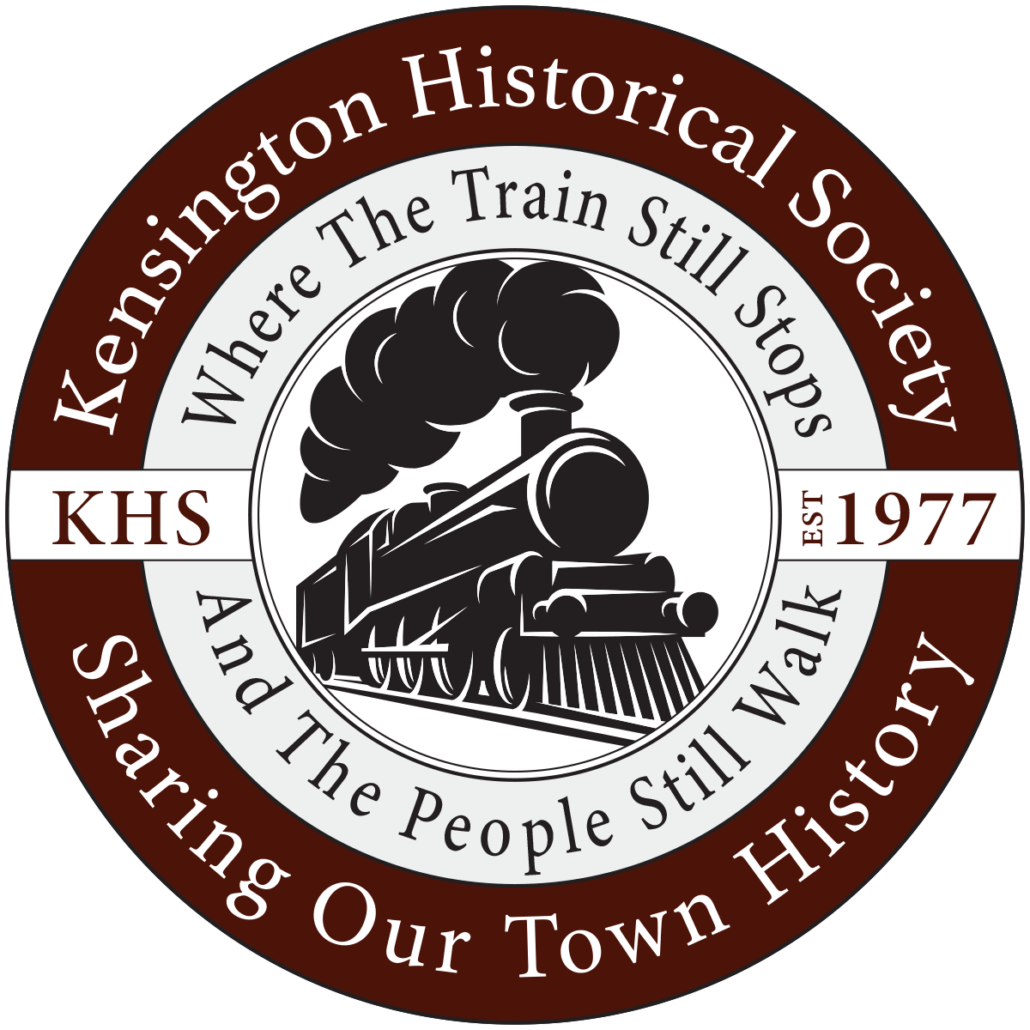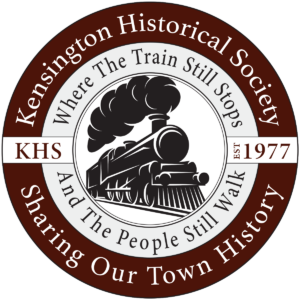
Contact Us
P.O. Box 453, Kensington, MD 20895
To request archival information, send an email to archives@tok.md.gov.
Office Hours
Visit the Archives by appointment.
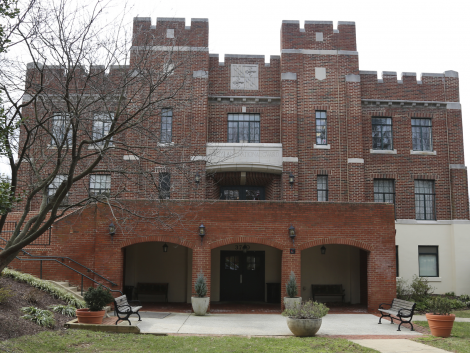
Welcome to Kensington Town Hall – if this building looks like a fortress or a castle, that’s because it was originally built as an Armory for the Cannon Company of the 115th Infantry. Constructed in 1927, everything about this building’s exterior exudes toughness – from its thick brick facade masonry to its reinforced windows and doors. Buttresses mark off the bay windows to reinforce the main hallway.
The extra wide doors in the entry are large enough to fit a vehicle through. In fact, originally there was a ramp that led right up to the entrance where trucks and other heavy vehicles could unload. The ramp was removed in the mid-1970’s and replaced with a terrace and an arcaded entry to the basement level which you see today.
The upper level houses the Town Government offices. The main level, in the “Drill Hall” is large enough to accommodate everything from plays, to dances, to religious services, to the widely popular Kensington Model Train Show.
Other parts of the Armory have an eclectic history. At one point there was a firing range here, as well as a bowling alley, and even a DMV. Up until 1947, it was also the home of the Town’s fire department.
Today’s Town Hall still has a wide range of uses – it’s the Town’s main polling place, and is the location for all official Town business. There’s a TV station in the basement. The Armory is also the home to the Town of Kensington Archives, where you can find a treasure trove of photographs and documents relating to the history of the Town.
After many years of the Kensington community’s commitment to the preservation of the Warner Mansion, in 2024 they were successful in working with Montgomery County to create a plan where the property will be renovated to be home to a number of residential units while also preserving the property as a park for the enjoyment of all.
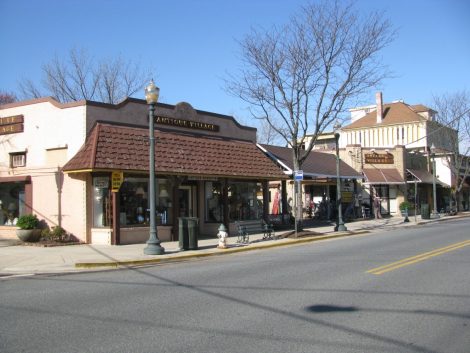
Stroll along Howard Avenue and you find shops, restaurants and a treasure trove of rare and unique antiques. Better known as “Antique Row” it is the town’s “main street.” There are about 60 privately owned shops on this street selling everything from crystal, china, books, jewelry, and furniture. It is also home to repair shops, music and art studios, and art galleries.
Antique Row was largely the brainchild of one man, Morris Parker. In the early 1970s, he began buying up and improving properties along the street. A shop called Drum Maker opened up nearby and it’s success led similar businesses to follow. Today nearly all the shops are independently owned, drawing visitors from around the region.
You’ll find some of the Town’s earliest buildings here, dating back to the turn of the 20th century. The Kensington gas station at Armory and Howard is a prime example, still much like it looked in 1920s.
If you happen to be here on a Saturday morning in the summer, you can catch an outdoor concert sponsored by the Kensington Historical Society. Feel free to relax in the Howard Avenue Park as bands play under a wood pergola in front of the The Society for Prevention of Blindness Thrift Shop. This building once housed the Montgomery Press. The Montgomery Press ran from 1895 to 1933 offering news of the County and the Town.
If you did not get your fill of antiques you can cross Connecticut Avenue to West Howard Avenue where you will find warehouses featuring antiques as well as new furnishings and other goods.
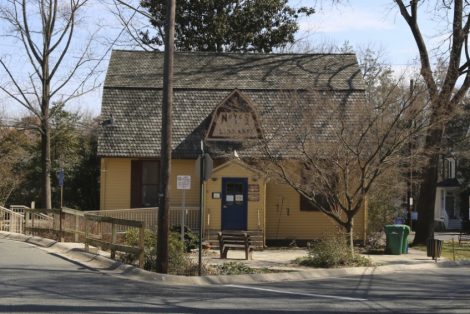
Walking along Montgomery Avenue toward the Warner Park surrounding the Manor on Carroll Place, you see a modest-size building on a small triangular island. A wise old owl sits above the entrance, beckoning visitors to come in.
Noyes Library opened in 1893 to serve the 80 or so residents of Kensington. The Town grew, bigger public libraries entered the picture, and Noyes became a children’s library and early literacy center in 1972. This one-room library exclusively for children offers storytimes, Penny Theater performances, and a large collection of board books, picture books, and chapter books. Look up at the front gable and you can see the Noyes owl, a symbol of wisdom and learning, and the NoYes Library sign. Children learning to read call this the “No Yes” library. This simple shingled building has undergone several renovations including enclosing the front porch, the addition of a vestibule, and a handicap access ramp.
Brainard Warner donated the triangle of land near his house and built the library. His friend, Crosby Noyes, provided the books, many of which he had reviewed as editor and publisher of the Washington Evening Star. Noyes is the oldest public library building in the Washington, D.C. area. It quickly became the social, cultural, and intellectual center of the community since it was the largest public building in Kensington, except for the schoolhouse. Town meetings were held here before there was a town hall and the Presbyterian Church met here before their own building was constructed. An association was formed to run the library, and funds were raised from activities such as musical entertainment, lawn parties, Halloween parties, and “book evenings” with candy sales. Subscriptions to the library were $1.00, and use of the reading room was free.
Since 1951 the library has been part of the Montgomery County Library System, but The Noyes Children’s Library Foundation was founded in 1991 to raise funds to pay the operating expenses to keep the library during County budget cuts. Their outreach and fundraising efforts have included storybook parades, silent auctions, and children’s dance parties. See https://www.noyeslibraryfoundation.org/ for more detailed information.
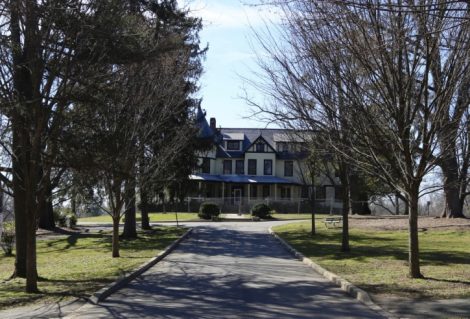
Warner Manor sits in the heart of Kensington. This stately home was originally owned by Brainard Warner who built this Victorian mansion in 1892 as a retreat for his family from Washington, DC. The house is built in a Queen Anne Style – note its massive front porch and its asymmetrical façade. The carriage house in the back was built in 1914.
Warner made his wealth as a real-estate developer in DC known for his grand buildings in the bustling city. Warner purchased a large portion of what is now Kensington to the south of the railroad tracks and subdivided it. He named the subdivision Kensington Park after the famed Kensington section of London, known for its majestic gardens.
Warner’s estate sits on a raised knoll of 4.5 acres. Nature factors into the design of the home itself with bays and turrets projecting out into the trees. The estate became the model for other Victorian-style homes in the neighborhood as homes were built with large plots and plenty of green space. In fact, the Town’s curving streets were intentionally designed to contrast to DC’s rigid grid system.
Warner lived in Kensington until 1918 and during that time the estate was a center for social events including grand parties, entertaining congressmen, senators and even President William Howard Taft once came to a party where lights festooned the trees all around the property.
After Warner passed away, his home changed hands a few times. In the 1960s, it became a nursing home. In 2005, the Montgomery County Parks Department purchased the property and restored exterior of the home and the carriage house. It is now referred to as Warner Circle Special Park. The land has once again become a hub for events such as fairs and concerts, and offering respite for citizens to meander in its gardens.
Throughout the town you can spot Brainard Warner’s influences. He donated funds and land for the Noyes Library, the Montgomery Press, and the Warner Memorial Presbyterian Church.
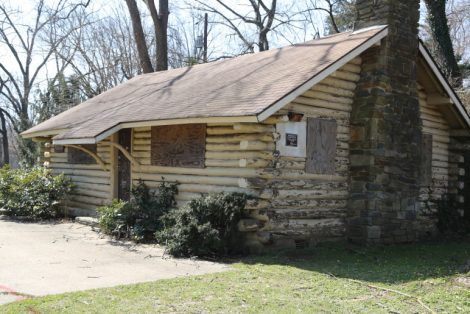
Necklaces made from cantaloupe, watermelon, and grapefruit seeds. Contests for Mr. and Miss Kensington, age 10 and under. Most Unusual Pet. Ugliest Dog. Horseshoe, badminton, and archery leagues. These are just a few of the many activities and events that brought a rich life to Kensington Cabin and its surrounding namesake park in the summer of 1943.
Generations of kids and families have laughed and played at this creekside park since it was first built in the 1930s. One of Kensington’s own, Blanche Armstrong, President of the Woman’s Club, came up with the idea of a park, envisioning “an attractive introduction to our village … and a pleasant meeting place for those who enjoy outdoor recreation.”
Construction on the rustic cabin began in 1933. However, workers employed by Roosevelt’s Civil Works Administration halted construction abruptly after just eight days, when the CWA program ended prematurely. The Montgomery County Parks Commission picked up the project, salvaging materials that remained on-site, and the cabin was completed and opened a year later. The structure gives “the feeling of having been executed by pioneer craftsmen with limited hand tools” and “thus achieves sympathy with natural surroundings and with the past,” as envisioned by the National Park Service’s handbook for park architects of the Great Depression era. Notice, above the main door, a pair of hand-carved tree branch brackets that support the entry roof. A coarse rubble stone chimney echoes the arched openings and guardrails of the nearby stone bridge over Silver Creek. The cabin walls consist of rough-hewn timber logs with overlapping ends.
The park grounds were renovated in 2015. The cabin itself was closed in 1991, and it sat unused until rehabilitation was begun in 2016. The games have changed from the days of kids’ contests for “Mr. and Miss Kensington” or “Ugliest Dog,” but the spirit of family, community and play will always stay alive at Kensington Cabin Park.
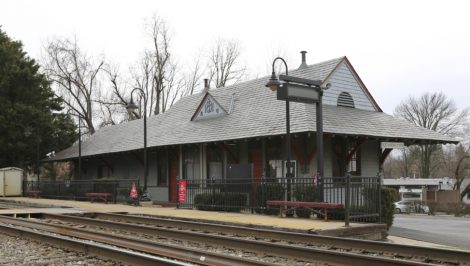
Perhaps the most iconic stop in Town is the Kensington B&O train station. In fact, residents of Kensington like to say that this is the town – where the train still stops … and the people still walk.
This station is the second-oldest active one in the county. Note on the roof the construction date 1891, written in period lettering. Back then it was called Knowles Station, named for George Knowles whose farm was subdivided to create much of the Town today. For just 35 cents Washingtonians could ditch their horse and buggies and take an 11-mile trip out to Kensington from DC’s Union Station.
Notice the station’s large eaves. The design is known as Stick Style – since it was meant to mimic the outside walls of an exposed half-timbered frame. But here it isn’t just ornamental – these eaves also offer shelter to passengers waiting for the train.
The Kensington station was designed by E. Francis Baldwin. For 25 years he served as chief architect for the entire B&O rail line – creating 100s of buildings though Kensington is one of only a handful of surviving stations.
Looking along the side of the station you can see the bay for the original ticket window facing the railway. Nowadays there’s only an automatic ticket machine indoors. Also inside the station there’s a period cast iron stove – not to mention a public restroom.
It’s no coincidence Town businesses were built around the station. Merchants catered to people arriving from the train and the long defunct Electric Car Line that ran between Kensington and Chevy Chase.
Back then one of the more popular spots for weary travelers and residents was McKeever’s Ice Cream Parlor and Sweet Shop. If you look across Howard Ave you’ll see a gym where McKeever’s was located and is now called “The Sweat Shop” – an unforgivable pun on the old “sweet shop.”
Also, while you’re looking across the street, peer into the adjacent alley and see the roofline and windows of the Town’s original bank built in 1907. Today that structure is incorporated into the M&T bank building.
On Saturdays, the station is alive without the usual bustle of commuters. It is transformed to a hub of community activity where families and vendors come together for Kensington’s popular, weekly Farmer’s Market. In the summer, music drifts over from the Howard Avenue Park where the Kensington Historical Society’s Saturday morning concerts are taking place.
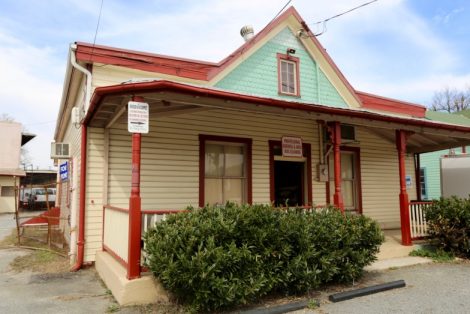
The two buildings before you at 10500 and 10520 St. Paul Street, next to the B&O railroad, date back to the beginning of the Knowles Station community serving the handful of farmers in the area. St. Paul Street was known as County Road at that time and crossed the tracks, which made it an ideal location for businesses. In the 1880s, William Mannakee established a general store at the crossroads, and ten years later a grocery store was built next to it. In the 1930s Russell and Ray Mizell bought this property and moved their lumber business from the often-flooded lot next to Rock Creek to this ideal location next to the Kensington station. The B&O railroad provided deliveries of high-quality lumber and hardware from distant sources. Three generations of the Mizell family ran the Mizell Lumber and Hardware Company for over 90 years at this location until the business closed in December 2011. The building on the left is still known as Mizell’s. The building to the right was known as Carmack’s in the 1920s and later as the Curtis Brothers’ Station. These two buildings are in the Kensington Historic District, and will keep their general appearance with wood siding and low overhanging roof. The street-facing gable with its scalloped shingles centered above the front doors, and the symmetrical windows flanking the doors are the original design. The turned posts and decorative brackets of the porch are typical of the 1890s. The facades of these buildings have changed very little since they were built.
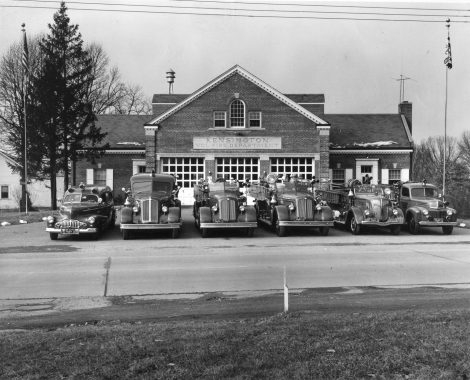
Prominently situated at the northwest corner of Connecticut Avenue and Plyers Mill Road is the Kensington Volunteer Fire Department, which had its origins in a bucket brigade started by Town residents in the mid-1890s. Volunteers stored firefighting equipment in their homes, and church bells sounded the alarm when fire emergencies arose. The fire department is still a volunteer organization, but it provides many more community-oriented services today, in addition to fighting fires.
The firehouse before you today was built in 1947, on farmland facing a two lane road. This enabled the fire department to expand from a basement garage in the local Armory into its larger, modern quarters. It has since had additions to accommodate newer trucks and sleeping quarters for the volunteers. A dedicated Auxiliary held bake sales, movies, and dances to raise funds for equipment and to supply a canteen truck to support the firefighters. The Auxiliary, still active today, is open Monday nights to loan medical equipment and always welcomes new members.
Note the two memorial gardens out front. To the left of the main doors is a “Member Memorial Garden” with bricks naming fireman who have served at this station. The garden to the right, a solemn memorial to the tragic events in New York on September 11, 2001, focuses the viewer on a gnarled, 16 ft. steel beam from the original World Trade Center. It was acquired with considerable effort by local firefighters to memorialize their NY compatriots and others who lost their lives that day. Nearby sits a large limestone boulder, which came from the Pentagon and serves to remind us of the victims at the Pentagon and those on Flight 93 in Pennsylvania, and to all firefighters, including the KVFD, who risk their lives for us with every call to service.
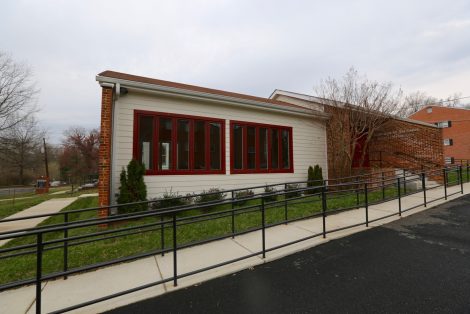
Travel three blocks down Plyers Mill Road west of Connecticut Avenue, passing the sign for Ken-Gar, until you see the Leonard D. Jackson Ken-Gar Community Center on the right. Once a two-room segregated school, this building received major renovations in 2013 by Montgomery County in recognition of its enduring importance as a center for educational and other community services. The Center was dedicated to Jackson, a local activist and champion of civil rights who organized the Ken-Gar Civic Association in the 1950s and helped bring basic improvements to the community.
In 1892, when Henry Copp subdivided twenty acres of land along the north side of the railroad just west of the Town of Kensington, the area was accessed solely by Bonny Castle Road, which connected with Garrett Park. Today, this road known as Plyers Mill Road dead-ends at a path leading to Rock Creek.
Building lot sales were slow in the early years. A resident farmer bought and farmed many of the unsold lots, and the sparsely settled community retained a rural character, with most residents raising their own food. In 1903, this started to change when trustees of the nearby Lee African Methodist Episcopal (AME) Church bought a single lot to build a new church for African-American residents. Over time, families settled around the church, which also served as Ken-Gar’s first school until the County built a school building next door, established as one of the Rosenwald Schools. When the County integrated its schools in 1955, the schoolhouse was closed and its students were transferred to Kensington Elementary School a few blocks away. The school building was later given new life as the Ken-Gar Community Center.
Ken-Gar received its second church in 1921, when Baptist members of the community bought a lot at the corner of Hampden and Vaughn Streets, and built the First Baptist Church, also still serving the community today. The two churches and the community center have remained staples of Ken-Gar, helping to coalesce a strong sense of community that endures today.

P.O. Box 453, Kensington, MD 20895
To request archival information, send an email to archives@tok.md.gov.
Visit the Archives by appointment.
